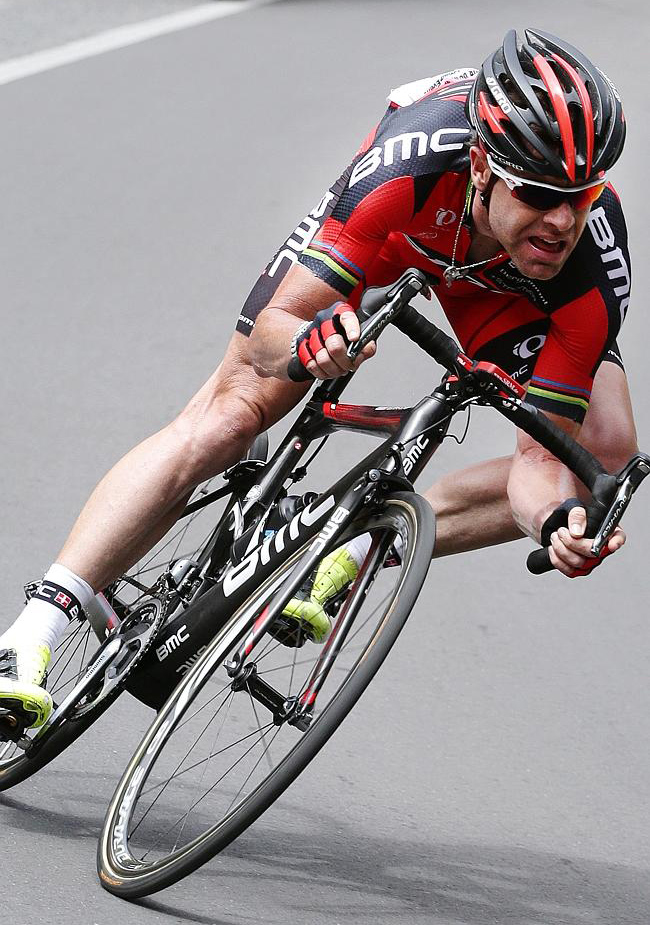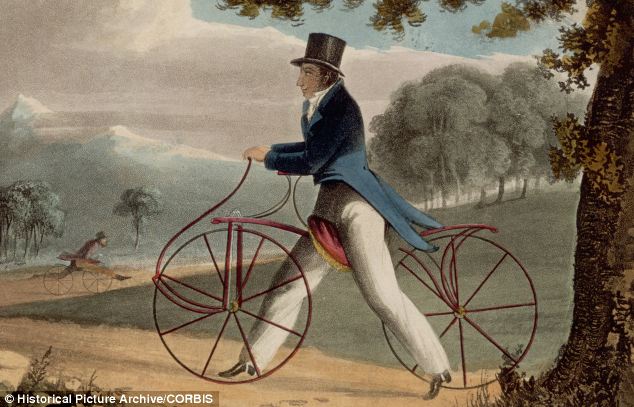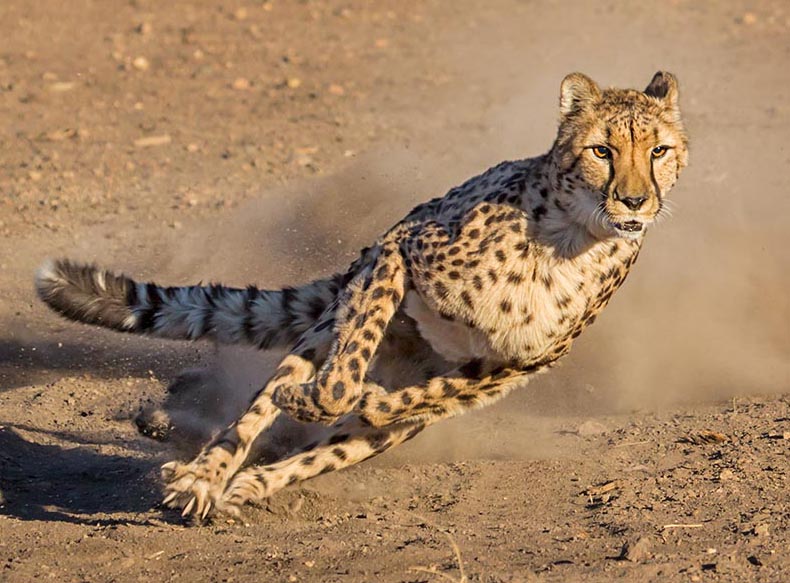Riding a bike: Science or Natural Instinct?
 Sun, February 4, 2018
Sun, February 4, 2018  I recently came across this article about scientist Matthew Cook working on a project to design a computer that could steer a bicycle.
I recently came across this article about scientist Matthew Cook working on a project to design a computer that could steer a bicycle.
I quote from the piece:
The problem is more difficult than you might think, we may be able to ride bicycles, but, as Cook notes, “We do not have great insight into how we ride a bicycle.”
Really! I will tell you. We do it instinctively, (With a little practice.)
The same instinct we use to walk and run. When man stumbled upon the bicycle, he built a mechanical device that is a simple extension of the human body.
Scientists find it hard to accept “Instinct” as a reason, because they can’t prove it, either by demonstration or mathematically. How many times have I watched nature programs on TV and heard the quote, “Scientists do not know how the salmon or the turtle swims thousands of miles through the ocean to find its way back to its place of birth.”
Or how birds migrate huge distances with the change of seasons. How do they know it is time, and how do they find their way?” The answer of course is instinct. Some inbuilt intelligence passed on from generation to generation, throughout evolution.
 I said earlier that man “Stumbled” upon the bicycle. He did just that, there was no single inventor.
I said earlier that man “Stumbled” upon the bicycle. He did just that, there was no single inventor.
The fore runner of the bicycle was the Hobby Horse, generally attributed to a German, but the French and English were building similar two-wheeled devices about the same time.
Even the Hobby Horse was not an original invention. For thousands of year’s children’s toys, models of animals, were made with wheels for feet.
Before the automobile the main form of transportation was the horse. It was natural children would play with pretend horses. The name “Hobby Horse,” is a clue. It was an adult size toy horse.
Later when cranks were attached to the front wheel, it became a bicycle. We no longer had a toy, but now a bona-fide form of transport, whereby people could travel under their own power. Moving greater distances, and with less effort than walking or running.
 To explain my thinking that humankind rides a bike and balances instinctively, let me pose this question.
To explain my thinking that humankind rides a bike and balances instinctively, let me pose this question.
How does a running man change direction? He leans to the left or right.
Not only man, but every other animal on earth.
 Try this simple experiment. Stand in one spot and lean to the left. When you reach the point when you are about to fall, you will instinctively step to the left, thus bringing your feet back directly under your body to bring it upright once more. This is how all animals turn while running at speed. They lean to the left or right, causing them to step to the left of right.
Try this simple experiment. Stand in one spot and lean to the left. When you reach the point when you are about to fall, you will instinctively step to the left, thus bringing your feet back directly under your body to bring it upright once more. This is how all animals turn while running at speed. They lean to the left or right, causing them to step to the left of right.
Also Newton’s Law of Physics states an object moving in a straight line will continue to do so until forces from a different direction cause it the change direction. If a running man were to try to turn by stepping left or right without leaning he would probably trip over his own feet as the law of physics would be forcing his body to continue straight. The lean, and the pull of gravity as he falls that way counters the forces causing him to continue straight.
A bicycle becomes a mechanical extension of the human body because the wheels simply replace our feet on the ground. If we fall to the left, we instinctively steer to the left to bring the wheels directly under our body mass, just as surely as if we were walking or running and fell to the left or right, we would instinctively step in the direction we were falling.
Furthermore, we instinctively lean in the direction we wish to turn, this time with the added bonus that a bicycle will steer itself in the direction of the lean. Actually three forces come into play:
1.) A spinning wheel or disc will turn in the direction it leans. Roll a coin on a flat surface it will roll in ever decreasing circles until it falls, as it turns in the direction it is falling.
2.) Because the steering axis is angled forward, and the front fork is raked or offset forward, there is a greater portion of the wheel ahead of the steering axis. The wheel’s own weight will cause it to turn in the direction it leans.
3.) On a racing bicycle, a handlebar stem or extension is used, placing the bars ahead of the steering axis. The weight of the handlebars will cause the front wheel to turn in the direction the bike leans. It will even do this if you lean a bike while stationary.
Riding a bicycle slowly is a simple balancing act as we constantly steer to the left and right to stay upright. No different in principal, than balancing a broom on the palm of our hand. The fact that we are slightly higher above the ground than we would be on our feet, works to our advantage. It is actually easier to balance a long handle broom with a heavy head, than a short handle lightweight broom.
As we gather speed and momentum, it becomes easier to balance and ride a straight line, as laws of physical motion take over. And when we wish to turn, we instinctively lean in that direction without thought, and with the same ease we would do so if we were running.
Finally, I leave you with these observations, and to me further proof that a cyclist leaning into a corner is an instinctive move. The cyclist will lean into a corner but keep his head vertical to the road surface. (See top picture.) Probably a vision thing to keep the eyes focused, and done instinctively. See also the picture of the Cheetah. The head is vertical, and the eyes horizontal, focused.
Also the cyclist’s inside knee pointed out. Is this too instinctive as if the rider was stepping in that direction? Motorcyclsts do it to the point their knee almost touches the ground. And yet it would seem unnatural not to do it.




















Reader Comments (16)
You should add in a section on counter steering:
https://en.wikipedia.org/wiki/Countersteering
I just started riding regularly a few years ago, and on occasion I would hit the side of the curb when turning. I never really understood why this happened till someone explained to me about counter steering. I would be riding close to the curb, with the curb on the right side of the front wheel and when I tried to turn left, I first would run into the curb making the left turn. I would bounce off the curb and say to myself why the heck did that happen, not realizing that I had turned right before going left.
Tom,
I wrote about counter steer here: http://davesbikeblog.squarespace.com/blog/2007/4/9/head-angles-and-steering.html
Dave
Its also interesting that I found, as I age (85 now) and as my hearing get worse, this has affected my balance. Walking down a hall I feel like I am drunk and bump in the walls OR maybe I AM JUST drunk????
John,
Is your balance affected when you ride your bike, or just walking? I am interested to know.
Dave
I always ride with my hearing aids in, But I have found around the house IF I do not have them in I do have balance problems. But I will ride when it warms up a bit ride WITHOUT THEM and let you know
If riding a bike is instinctive, then where does style come in?
A cheetah chasing its prey looks like any other cheetah chasing prey, as far as I have seen. Not much individual style or distinction. But, I see all types of riding styles on the bike.
The beauty of the bike is that is allows for everyone to ride how they want to ride, and boy do they.
If riding is instinctive, then how is it Faliero Masi could observe how a person sat on the bike and know so much about that rider, and see differences in each rider?
If riding is instinctive, then it may be possible years from now we’ll see a robot riding a bike. But that robot sure as hell won’t have style, or panache, or class. It will be programmed just as every other robot around. That, in the end, will just be a circus trick, a useless one, but an expensive trick no less.
I don’t see the point.
Steve,
I probably should have used the word "Intuitively" rather that "Instinctively." Writers' including me tend to use the two words interchangeably but generally an animal hunts instinctively, people act intuitively. But both mean acting automatically without conscious thought or reasoning. Your own illustration of Faliero Maso knowing so much by simply looking at someone riding a bike is the very essence of knowing intuitively.
To me "Style" would be a whole different subject.
Dave
Dave - I used to be a research scientist (on proteins), so I'm going to try and defend scientists here. :)
One of the problems with scientists when they try to chat with lay people is that the words they use have different meanings in a scientific context than they do in the rest of the world. For example when most people say they have a 'theory' about something, they really mean that they have a 'hypothesis' (in scientific terms). In science, a theory is a completely different beast - something that leads to unending misunderstanding in the lay world.
Anyway, when a scientist says that she or he (or science in general) doesn't know how a turtle has the ability to find the beach they were hatched on, and how they're able to return there to lay their eggs, they know it's because of instinct. They're unsure about how that instinct works - what's the molecular and physiological nature of that instinct. How is it stored in the organism, and how do they access that instinct to find their way back to where they came from.
For a scientist, saying that something happens because of instinct is similar to saying that god made the universe and all that's in it. That's an explanation, but not something that can be easily tested. Scientists say they know how something works when they have a good grasp of the underlying physical and chemical (and biological) aspects and how they interact to produce an outcome.
Of course, there's a lot of trial and error in science. Not everything that's 'known' is correct. It will change, as our understanding deepens.
I learned in medical school that if you wanted to carry a coffee cup up the stairs without spilling your coffee, you would be much more successful just walking up the stairs (without looking at the cup), than trying to watch the cup and trying to correct every perceived slosh or spill. The point is the body has an impressive mostly unconscious perception and balance mechanism - but trying to explain or reproduce these mechanisms, in a computer program, or with a set of written laws or equations, or in a robot, is much more complex than I think we are currently capable of describing easily.
Found this explanation for the knee thing among motorcycle riders. I think it would apply to cycling as well:
Whether you actually drag your knee or just hang off the bike, moving your weight towards the inside of the turn lowers the combined center of gravity of you and your bike and allows you to complete the same radius turn at the same speed using less lean angle. The more you lean off the more available lean angle you have to work with which means you can continue to increase your corner speed without exceeding the traction limits of your motorcycle and tires.
http://www.cornercarving.com/6-reasons-you-should-be-dragging-your-knee/
Neil,
That is interesting, most of the reasons for doing it on a motorcycle make sense, but don't even apply to a bicycle, but we do it anyway. This reinforces my belief that it is an instictive move. I don't remember ever being told to do that by anyone, but would not feel comfortable cornering at speed without sticking my inside knee out.
Dave
They will be able to build a robot that can ride a bike as soon as they can build a robot that can walk on two legs on uneven ground.
Dave check this youtube video I think you & your readers would be amazed how difficult it is to ride a backwards steering bike. the backwards brain bicycle. smarter everyday 133.
Dave, Thanks again for bringing up a topic that gets us all thinking! Probably our best 'instinct' is the ability of continual learning...whether to ride a bike or launch a rocket into space. For problems like explaining how a bird knows how to navigate thousands of miles home, we just have not developed all the tools for this discovery. Maybe quantum computing will become that tool...maybe not...but we will keep trying. The link that DK pointed us to 'smarter everyday' was fabulous along with Destin's other videos. Mike
There has been a bicycle riding robot for years now. It just isn't very stylish or capable of difficult terrain.
https://www.designboom.com/technology/bicycle-riding-robot/
David Herlihy will have some history of the inventor (s) of the pedal-powered bicycle (velocipede) published soon.
The Michaux origin is that of a marketer, not a maker.
The article is great, (though does not reference counter steer) and would stand up on its own (pun intended) without the slight on scientists. I AM a scientist having a BSc in Microbiology and an MSc in Toxicology and a life brought up as a straight line (again pun intended) Newtonian cause and effect type thinker. It does just irk me when folk will blindly follow anything that 'science has proven'. So many examples where even theories not just hypothesis have been overturned. I remember reading for example in my youth (not too long ago cheeky!) that the moon 'budded' from the earth in a book...I have it somewhere. My father (his nickname is Spock) was a teacher of Physics at that time and I still wonder at how that all knowing man who I greatly respect could possibly have believed that to be true. So anyway, Despite having unlearned much of what I have learned over the last 30 years and try to listen to my gut instincts and live more intuitively from the heart instead of the head I still feel that your comment is unnecessary and also off beam in that all the scientist said was that we don't have much insight. In fact, his inability to construct a mathematical model to mimic going around a corner and apply it to a construct is saying pretty much what you then spend the whole article saying....that we do it intuitively.